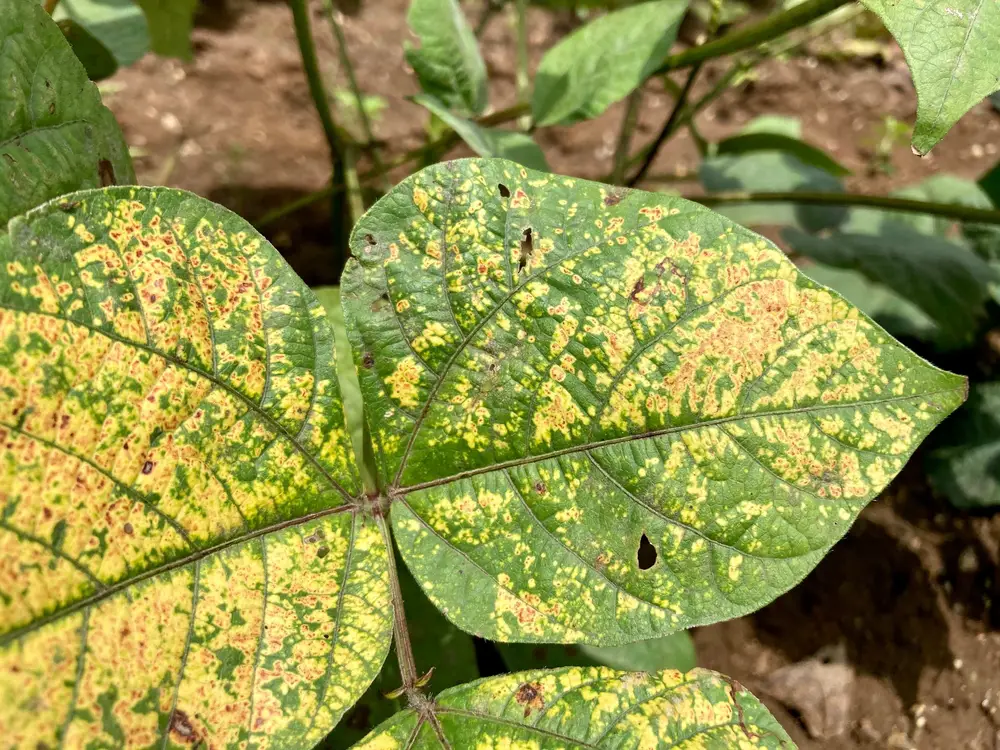Bean plants are known as harbingers of the summer because not only do they provide the first crop harvest, but they also provide pods during the summer season.
Yet all this can only be achieved when proper care and good maintenance are set in place.
The yellowing of the leaves usually starts with the older leaves and moves up to the younger ones.
Fixing yellow leaves on bean plants is easy, but you need to know the cause.
Once you know the possible causes of yellow leaves, all you need to do is reverse them one by one.
Here are 7 steps you can follow to fix yellow leaves on beans:
Improve Draining Systems
Bean plants have shallow roots hence the moisture content of the soil has to be perfect otherwise, you will risk the bean plant developing yellow leaves.
Improve Alkalinity
Since soil pH level plays a crucial role in maintaining a healthy bean plant, you must take the necessary measures to make the soil’s acidity level convenient with bean plants.
Get Rid of Diseases And Viruses
Diseases and viruses are the greatest enemies of every plant. You don’t want them getting comfortable infesting your plants, so you must get rid of them.
Please choose the best pesticide available in your area and use it with caution.
Provide Adequate Sunlight
The sun is one of the lifelines of every plant, and an insufficient amount of sunlight means weaker plants and can cause the bean plant’s leaves to turn yellow.
Therefore, you must place your bean plants in an area where they can access a good amount of sunlight for 8 hours a day to promote chlorophyll production.
By doing this, you’ll ensure the plants get the right amount of sunlight and this will hel0 towards your plants becoming healthy again.
The Correct Temperature
Once you’ve got the sunlight right, don’t forget about the temperature – which is equally important.
Your beans thoroughly enjoy temperatures between 70 to 80 degrees Fahrenheit. They like warmth. If the temperature drops below 70 degrees, this can cause the leaves to turn yellow.
Therefore, if you live in a cool area, it would be best to plant your beans in your greenhouse, where they are temperature protected.
Water Regularly and Properly
Alongside a good draining system is a regular and proper watering schedule. This will minimize the chances of overwatering your bean plants, resulting in the yellowing of leaves.
You should neither under nor overwater your plants. They cannot absorb the nutrients they need to grow when you underwater them.
It’s also bad when you overwater them because it smothers the plant, and again the plant battles to get the nutrients it needs to grow.
Always check the soil moisture before applying water. Put your finger into the soil for an inch or two and test the amount of moisture already there.
If the soil is moist, allow the soil to dry out a little and don’t water for a few days.
Your beans need about two inches of water per week. Keep your watering balanced, and it will help stop the yellow leaves from appearing.
Good Fertilizer
Bean plants are light feeders, which means they do not need excessive fertilizing to grow. Before planting the bean plant, put a fertilizer in the soil.
You can get a test kit that will tell you what’s wrong with your soil so that you can add whatever it needs to be in good condition.
Green beans produce nitrogen, so do not buy a nitrogen-rich fertilizer.
Compost is of great help and can make a difference to the health of your plants.
This will increase your chances of having a prosperous bean plant with little risk to yellow leaves.
Why Are Leaves Turning Yellow?
To summarize, the problem of leaves turning yellow can be attributed to the soil quality of your plant.
If the soil quality does not meet the required conditions for bean plants to grow, they will indeed develop yellow leaves.
The irregularities in the soil make it hard for bean plants to grow and look lively.
What are the specific problems in the soil that led to bean plants having yellow leaves?
1. Draining
2. Alkalinity
3. Diseases and viruses
The first reason can be the draining system of the soil.
If excessive water stays in the soil for a long time because of a poor draining system, the roots of bean plants will rot and yellowish leaves.
The second reason is the alkalinity of the soil. The soil must be at the right pH level to prevent developing yellow leaves in your bean plants.
If your soil has a proper draining system and still produces yellow leaves, you better watch out for the alkalinity of the earth.
The third reason for the yellowing of leaves is diseases and viruses. When the bacteria is to blame for the yellowing of leaves, you will notice water spotting or dry leaf edges.
A common infection caused by bacteria is called halo bright, which causes yellow spots on a bean plant.
When the suspect is a viral infection, you will notice multi-colored spots on the leaves responsible for developing yellow to brown leaves.
The typical virus infecting the bean plant is called the mosaic virus.
Final Thoughts
The causes of yellow leaves on bean plants are not difficult to counteract. Most of them are common problems that some of us may forget to investigate.
Remember to always protect yourselves by wearing gardening gloves whenever dealing with diseases.
Every step provided in this article, and you will be guaranteed healthy bean plants – free of yellow leaves.
Jenny Marie
Tribal Writer
Edited By
Patricia Godwin

